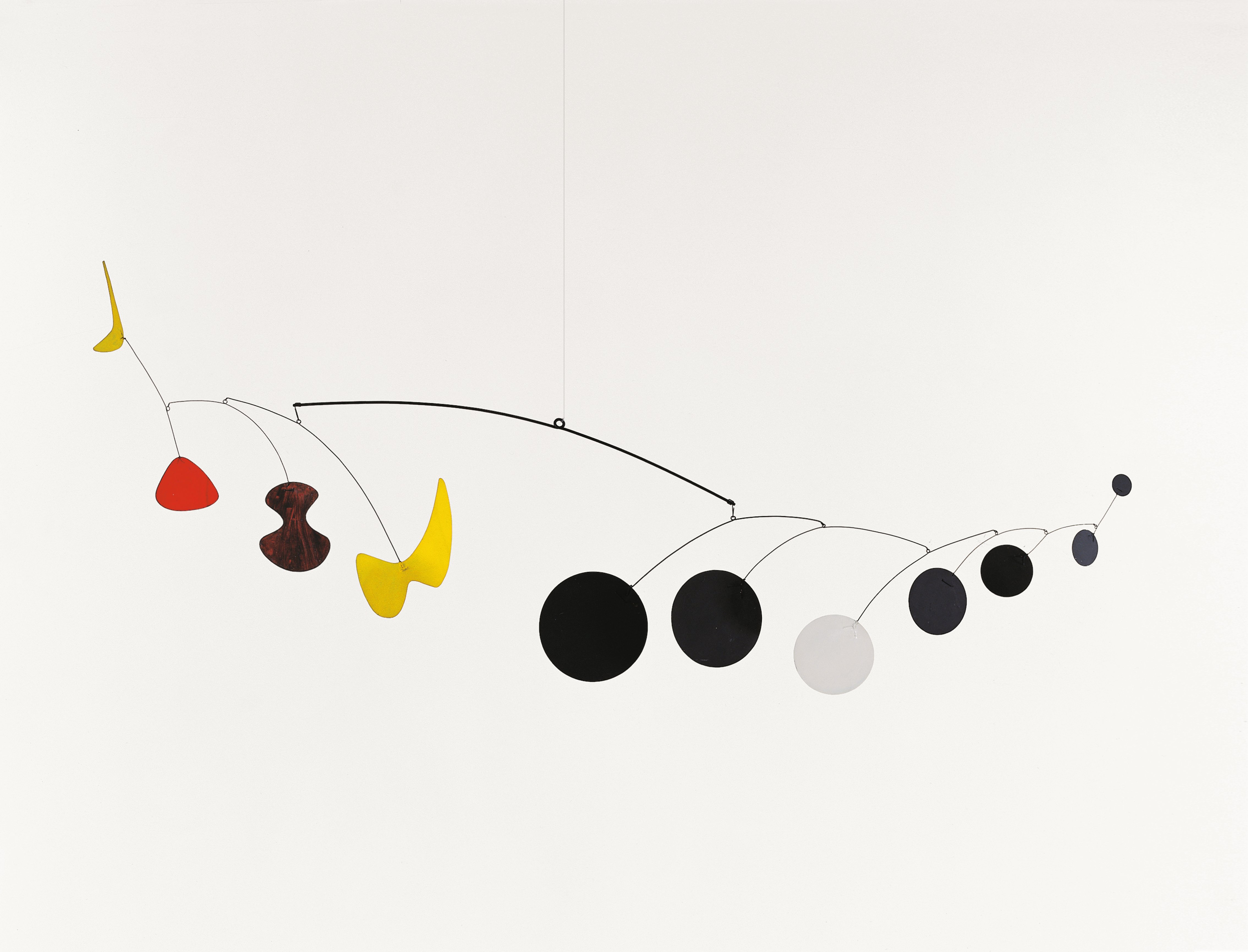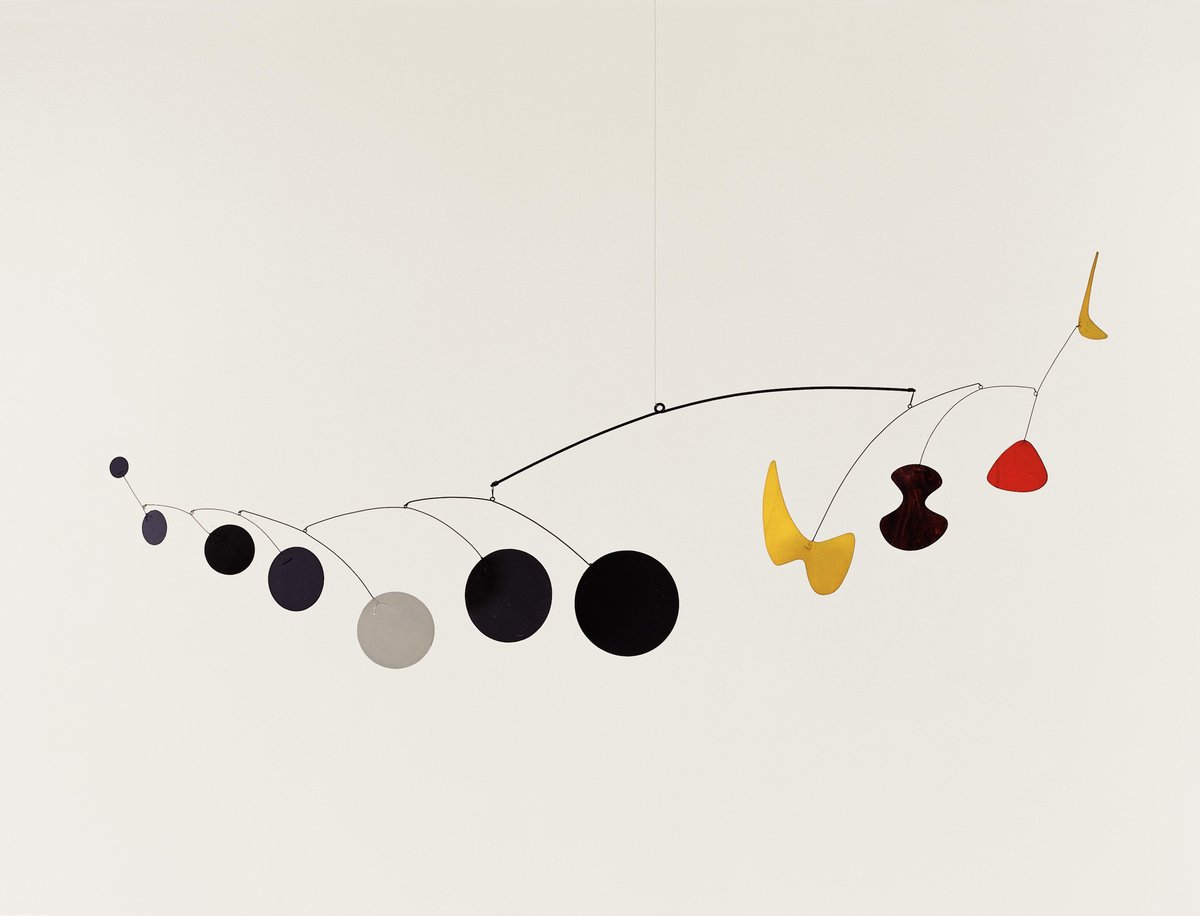Alexander Calder
Untitled, ca. 1934/1939

Alexander Calder
Untitled, 1938/1939
Kunst Museum Winterthur, Ankauf, 1970
Foto: SIK-ISEA, Zürich (Lutz Hartmann)
In 1926 Alexander Calder left America and went to Paris where the most important new artists of the time were working. His encounter with the Dutchman Piet Mondrian was groundbreaking. The spartan furnishings in Mondrian’s studio and the wall design in the primary colours of red, yellow and blue made a deep impression on Calder. The only question in his mind was why the coloured elements weren’t arranged so that they were movable.
In 1932 Calder developed works made of wire and painted sheet metal parts. They were suspended so that the elements could move in a draught. The artist Marcel Duchamp named them "Mobiles".
In this mobile two distinct groups of elements have been combined: the one group consists of objects in the primary colours of yellow, red and black, while the other consists of black and white circular forms. On the one hand we have objects that allude to "things," and an abstract choreography on the other.
Mobiles consist of weights and counterweights. The movement of one element influences and communicates with the others. Thus, the forms turn in an unpredictable manner and are seen in a constantly changing state. Calder didn’t want to influence the viewer’s associations and therefore didn’t give the mobile a title. Its first owner later named it 'Poisson', fish.

Alexander Calder
Untitled, 1938/1939
Kunst Museum Winterthur, Ankauf, 1970
Foto: SIK-ISEA, Zürich (Lutz Hartmann)


